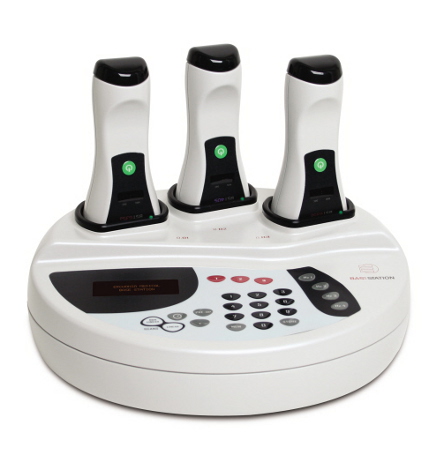What is Laser Therapy?
Laser Therapy is the application of red and near infra-red light over injuries or lesions to improve
wound / soft tissue healing and give relief for both acute and chronic pain. It is now officially referred to as (Low Level Laser Therapy) LLLT.
Laser Therapy is used to:
-
Increase the speed, quality and tensile strength of tissue repair
-
Give pain relief (muscles & joints)
-
Resolve inflammation
-
Relieve low back pain, swelling, knee, foot and ankle pain, headaches, tendonitis, carpal tunnel syndrome, and much more!
Low Level Laser Therapy is nothing more than shining a very high intensity light into the area of interest, it's just that this "light" is very intense, "monochromatic" (one wavelength), coherent (all the photons are in phase and synchronized) and is applied with a very specific dose in mind. It is painless, non-toxic, non-invasive, without drugs and very safe if applied by a trained practitioner.
In short, LLLT reduces healing duration 30-40% and the injured tissues are stronger than if they had not been exposed to LLLT. Listed below you'll find a brief synopsis of what LLLT is and for those wanting hard data, you'll find a number of research abstracts from Erchonia.com that document and prove the effectiveness of LLLT.
The red and near infrared light 630nm) is produced by laser. The intensity of LLLT lasers is not high like a surgical laser*. There is no heating effect. The effect is photochemical (like photosynthesis in plants). Red light aids the production of ATP thereby providing the cell with more energy which in turn means the cell is in optimum condition to play its part in a natural healing process.
How Long Are Treatments?
Treatments can vary in time from seconds to minutes depending on the condition. Research studies show that there may be a dose dependent response, so it may be more effective to treat at lower doses at multiple intervals then to treat a single time with a high dose.
How Does It Work?
Like photosynthesis - the correct wavelengths and power of light at certain intensities for an appropriate period of time can increase ATP production and cell membrane perturbation could lead to permeability changes and second messenger activity resulting in functional changes such as increased syntheses increased secretion and motility changes. Red and near infrared light seem to be the most ideal wavelengths.
Red light and near infrared light acts on the mitochondria and at the cell membrane. In in-vitro and animal LLLT wound healing studies comparing wavelengths, red consistently is more effective. Shorter wavelengths are not as good and are more expensive to produce and have poor penetration; overall, they are a poor choice.
Near infrared light, while not quite as good, do penetrate better than the red wavelengths and are available in higher powers. According to live in-vivo experiments at Uniformed Services University Bethesda Maryland (a US military research center)630nm is the best penetrating wavelength. It also happens to work well in LLLT nerve regeneration studies they are doing.
What are the contra-indications?
Direct Irradiation of the Eyes - Class 3b lasers are potentially harmful to the retina - though retinal damage is highly unlikely. Safety goggles must, however, be worn by both patient and practitioner.
Pregnancy - Laser is contra-indicated for use over the pregnant uterus. It may be used on the pregnant woman as an adjunct to the other modalities being used for the treatment of back pain or other complaints.
Carcinoma - Do not use laser over any known primary or secondary lesions. Laser treatment may be given for pain relief during the terminal stages of the illness - we recommend this be done only with the full consent of both patient and consultant involved.
Thyroid - Laser should not be used over the thyroid gland.
Hemorrhage- It is conceivable that laser-mediated vasodilation may worsen the hemorrhage.
Immune Suppressant Drug - Laser Therapy is contra-indicated for patients on these drugs
Treatment Over Sympathetic Ganglia, The Vagus Nerves & Cardiac Region in Patients with Heart Disease. Laser therapy may significantly alter neural function, and is therefore contra-indicated over these regions in patients with heart disease.



